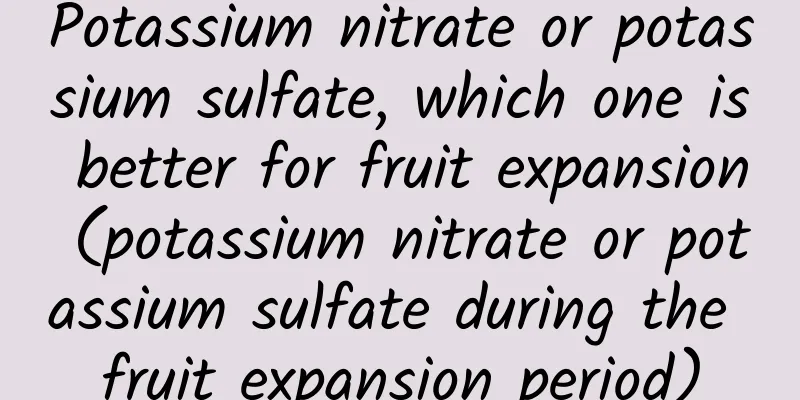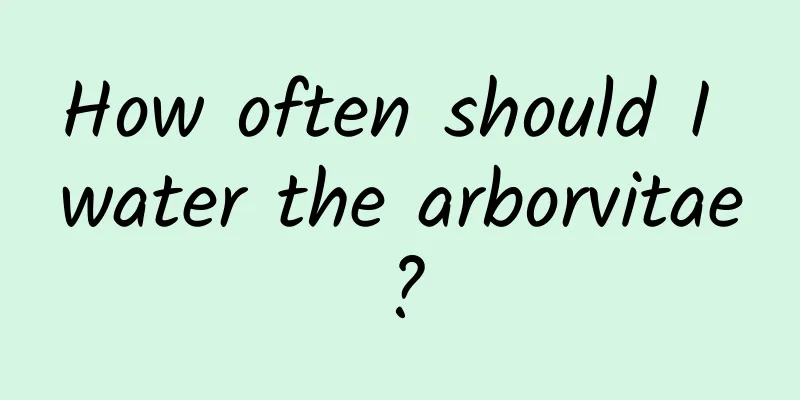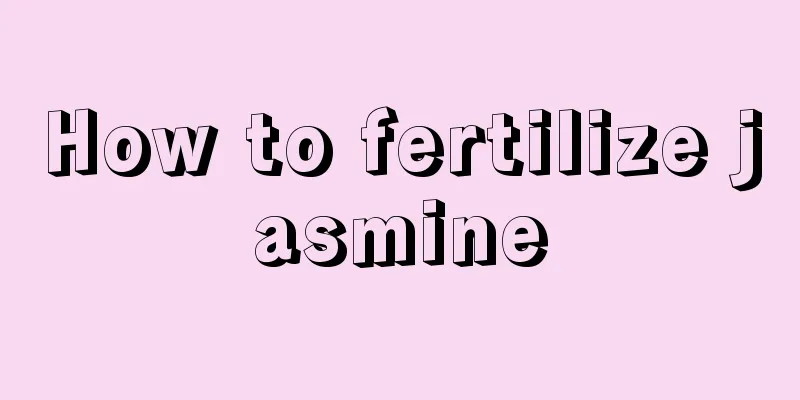Potassium nitrate or potassium sulfate, which one is better for fruit expansion (potassium nitrate or potassium sulfate during the fruit expansion period)

|
Potassium nitrate and potassium sulfate are both fertilizers with high potassium content, but potassium nitrate is a binary compound fertilizer, while potassium sulfate is the main type of potassium fertilizer, containing potassium and sulfur. Whether it is potassium nitrate or potassium sulfate, it is sold in most agricultural supply distribution stores in various places. You can also buy it online. It shouldn’t be too difficult to buy it, right? Potassium has a great influence on the expansion, coloring, taste, etc. of the fruit. It can promote the absorption of nitrogen, which is beneficial to the expansion and coloring of the fruit. Because potassium can be recycled, potassium-deficient plants do not show symptoms of potassium deficiency immediately, but only appear to grow slower. Most symptoms of potassium deficiency are not obvious until the middle and late stages of crop growth. Therefore, potassium application to crops requires early application, preferably basal application and early topdressing. You can apply potassium nitrate or potassium sulfate during the fruit expansion period of crops, but for colored fruits such as apples and peaches, I recommend applying potassium sulfate, especially potassium nitrate should be applied with caution during the color change period of the fruit . This is mainly because: 1. Potassium nitrate contains nitrogen, and topdressing during the color change period affects color developmentPotassium nitrate is a nitrogen-potassium compound fertilizer containing about 13% nitrogen and about 46% potassium (K2O). Potassium can transport nitrogen and promote fruit expansion, but nitrogen is not conducive to fruit coloring. Applying excessive potassium nitrate fertilizer during the fruit expansion and coloring period will affect the color of the fruit and easily cause the fruit to turn green again. Potassium nitrate is easily soluble in water, is a quick-acting fertilizer, and is neutral. Because the nitrogen in potassium nitrate is nitrate nitrogen, which is easily lost with water, potassium nitrate is generally not suitable for use as a base fertilizer, especially in paddy fields. It is generally used as a topdressing fertilizer. For fruit trees such as apples, grapes, peaches, and cherries, which require beautiful fruit color as a selling point, it is best not to apply potassium nitrate fertilizer during the coloring period of the fruit. However, for root crops such as potatoes, ginger, taro, and sweet potatoes, topdressing can be applied in the middle and late stages of their growth, with better results. When applying potassium nitrate to these crops, it is important to apply other nitrogen and phosphorus fertilizers in combination to improve fertilizer efficiency. Potassium nitrate can also be sprayed on leaves at a concentration of 0.6%-1%. It can be sprayed on leaves during the fruit expansion period. It is recommended to use it with caution in the middle and late stages . 2. Potassium sulfate is the main potassium fertilizer and can be applied throughout the processPotassium sulfate is the main type of potash fertilizer, with a potassium content (K2O) of 48%-52%, generally 50%. Pure potassium sulfate is white, easily soluble in water, and is a fast-acting potassium fertilizer with weak hygroscopicity and is not easy to clump. The main reason is that potassium sulfate does not contain nitrogen and will not affect the color change of fruits. In particular, it does not contain chlorine, and has better effects on chlorine-sensitive crops and cruciferous crops that require sulfur. Potassium sulfate is an acidic fertilizer. If used continuously for many years in acidic soil, it may increase soil acidity. If used continuously for many years in alkaline soil, it may cause soil compaction. Whether it is grain crops or economic crops such as fruits and vegetables, potassium sulfate can be used as base fertilizer, topdressing fertilizer, seed fertilizer and foliar fertilizer. When applying potassium sulfate to crops such as sweet potatoes, potatoes, and fruit trees, it is best to apply it deeply and in a concentrated manner in the root-dense area to facilitate absorption and utilization by the root system. Potassium sulfate can be applied at any time during the fruit expansion period, but it can be applied in combination with appropriate amounts of nitrogen and phosphorus fertilizers in the early stages to fully exert the fertilizer effect . In acidic soil, it can be applied together with phosphate rock powder and lime to improve the utilization rate of phosphorus and prevent the increase of soil acidity. Potassium sulfate should not be applied to paddy fields. 3. The price of potassium nitrate is higher than that of potassium sulfateThe price of potassium nitrate is much higher than that of potassium sulfate. Although potassium nitrate can be used in the early stage of fruit expansion, if the soil has sufficient nitrogen fertilizer, I think it is more cost-effective to use potassium sulfate, and it can also be applied during the color change period . 【 Summarize 】 In the early stage of fruit expansion, you can apply potassium nitrate or potassium sulfate, but after the fruit changes color, it is recommended that you apply potassium sulfate . In terms of input, potassium sulfate is less than potassium nitrate. Therefore, in the fruit expansion period, I think it is better to use potassium sulfate. |
<<: What is the best month to plant fennel (sowing time and management methods of fennel)
Recommend
Can Amaryllis be transplanted in autumn? What season is best for transplanting?
Can Amaryllis be transplanted in autumn? Amarylli...
How to repot a jade plant
1. When should I replace the new basin? 1. There ...
What flowers are suitable for growing in Liangshan? What are the city flowers and trees?
1. Climate characteristics of Liangshan Liangshan...
How to fertilize gerbera
1. Frequency and timing of fertilization Gerbera ...
The efficacy and function of Sydney
1. Nourishes the lungs Snow pear can moisten the ...
How to grow lotus root
1. Soil: Lotus is not very demanding on soil qual...
When does Clivia bloom? When does Clivia bloom?
1. When is the flowering season? Clivia usually b...
How to grow African violets in spring
1. Sufficient water In spring, it grows faster an...
Is Anthurium suitable for a large pot or a small pot?
Should I use a large or small pot for Anthurium? ...
Peach tree cutting time and method
Peach tree cutting time Peach tree cuttings can b...
When is the best time to plant jicama?
Yam is a vine plant that is mainly distributed in...
Rose = medicine jar? Learn these 5 tips to ensure that your flowers bloom every month without attracting insects!
powdery mildew Powdery mildew can be said to be t...
How to take cuttings of blue flower dandelion
Illustration of blue flower Dan Start cuttings on...
Disease and Pest Control of Peony
Diseases The first is "anthracnose", wh...
The difference between Gesang flower and Cosmos
1. Differences in plants: There are many types of...









